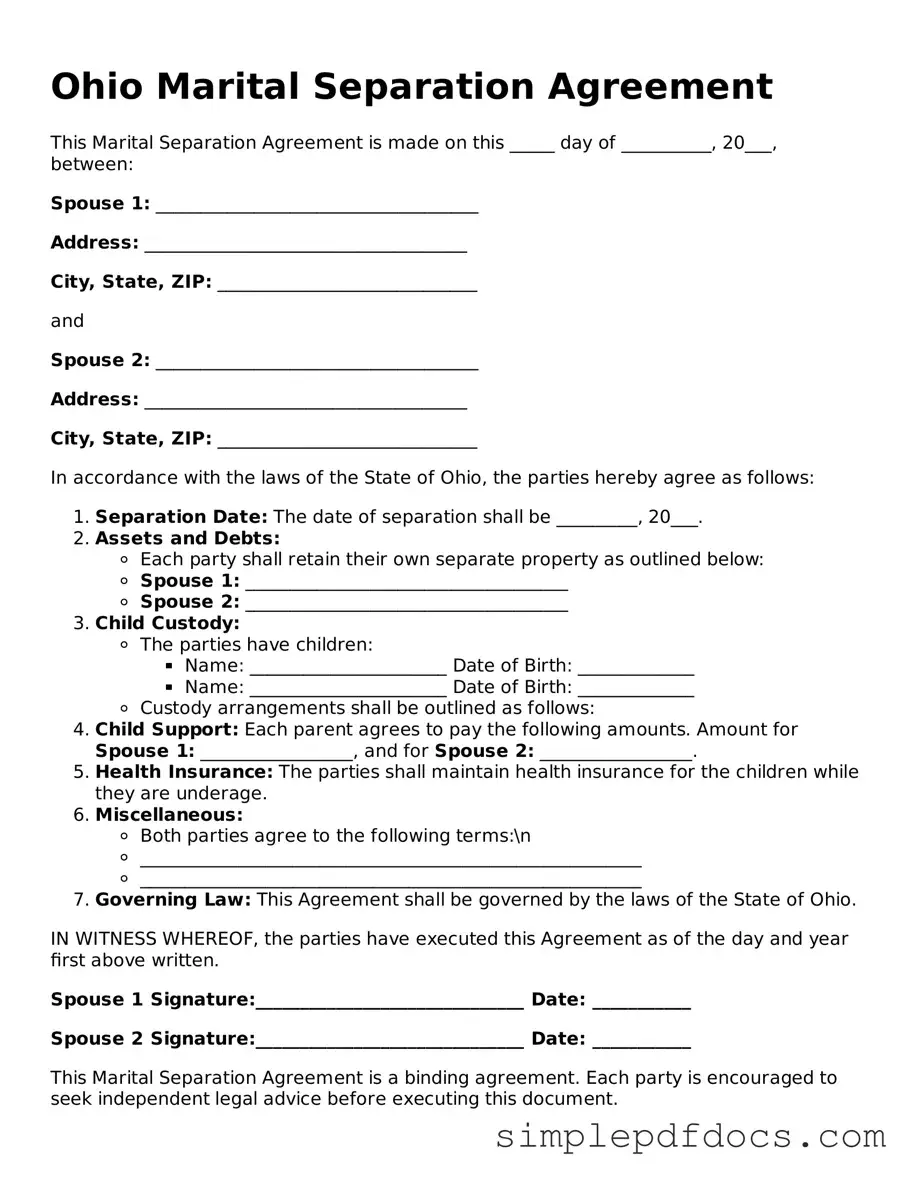Legal Marital Separation Agreement Document for the State of Ohio
The Ohio Marital Separation Agreement is a legal document that outlines the terms and conditions agreed upon by spouses who choose to live separately while still being legally married. This agreement typically addresses issues such as property division, child custody, and financial responsibilities. Understanding this form is essential for couples navigating the complexities of separation in Ohio.
Get Document Here
